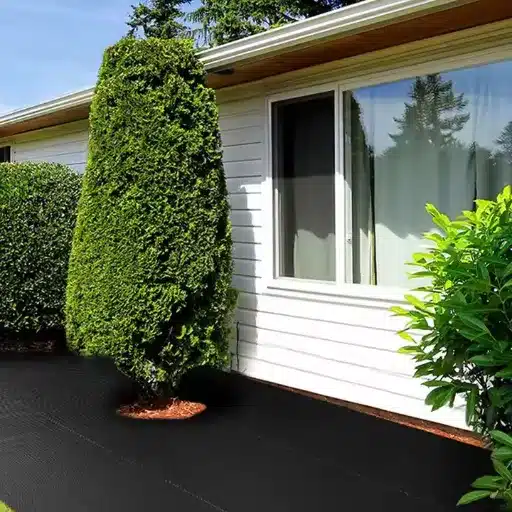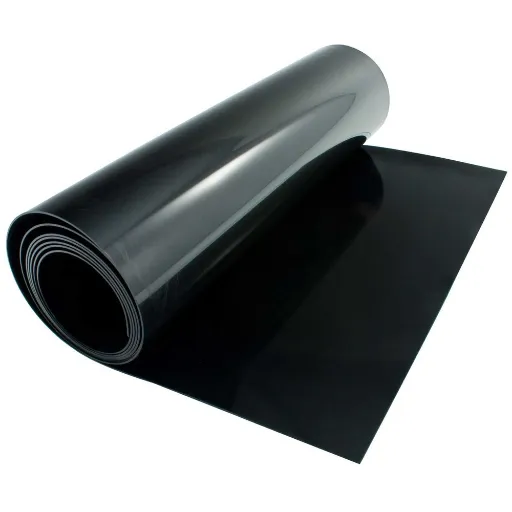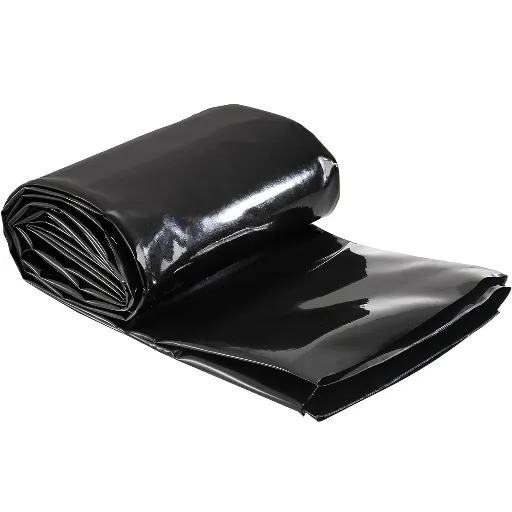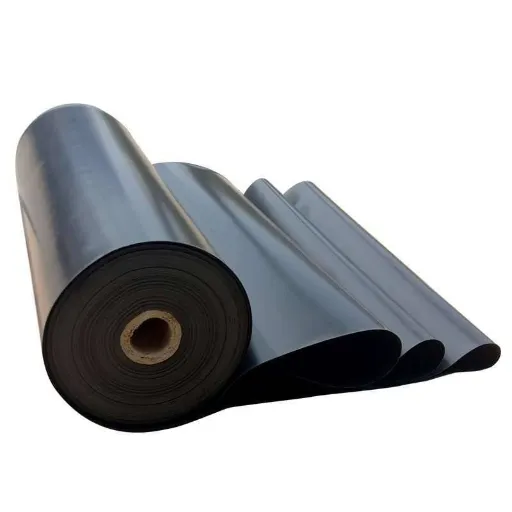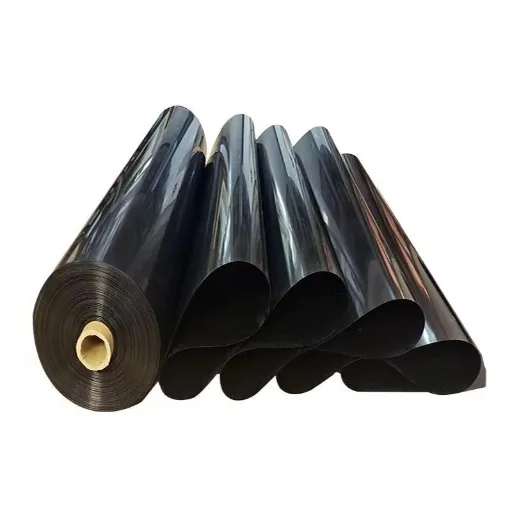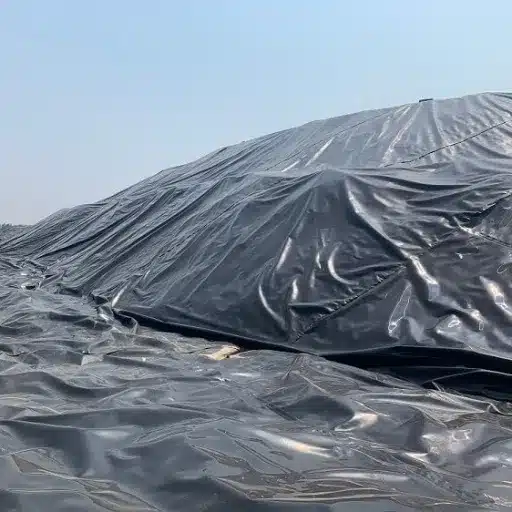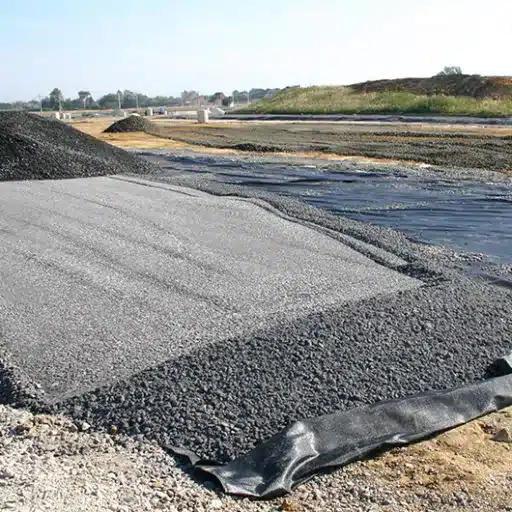Considered one of a gardener’s adversaries are weeds. These unwanted plants choke off your desired plants while sucking nutrients away from the soil. Luckily, a classic approach has at its disposal the ability to nurture your land into healthy growth and keep the weeds at bay-landscape fabric. Given so many to choose from-and by extension types of weed barrier-so which does the best for your needs? We’ll explore all things landscape fabric: benefits, uses, and how to choose the correct one. Whether you are a knowledgeable gardener or wish to learn more, this guide will give you all the information you have ever wanted to get out to your garden-from goodbyes to weed menace forever.
Understanding Weed Barriers
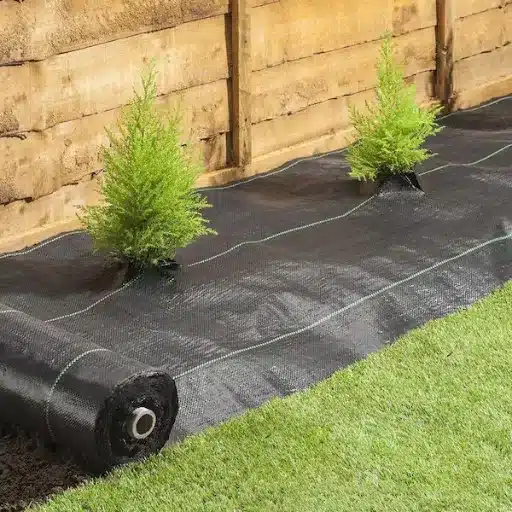
When choosing the best weed barrier for my needs, I am concerned about the durability of the material, the permeability of the material toward air and water, and the compatibility of the material with the layout of the garden. I want the fabric to have permeability toward water and air to reach the soil yet capable of blocking sunlight for weed formation. Another thing to consider is how long the product will last in my climatic conditions. These are all factors that will ensure that I have chosen an ideal and practical solution that contributes to a healthy garden ecosystem.
What Is A Weed Barrier?
Weed barriers, commonly called landscape fabric, are gardening and landscaping materials that ideally limit weed growth without a need to apply many herbicides. Made typically from closely woven polypropylene or polyester, weed barriers create a physical obstruction so that sunlight cannot reach the weeds, while they allow passing water, air, nutrients, and all necessities required for different plants to grow. This way, they ensure that favorable plants have the conditions to grow while unfavorable weeds do not.
📊 Research Insight: According to recent studies, weed barriers can suppress 90% of weed growth in conditions where gardens are taken care of.
Landscape fabrics today are available in several weights (gram per meter squared, or GSM), heavier fabrics being stronger and thus suppressing weeds more in areas exposed to heavy traffic or in permanent installations. For instance, a 3 oz fabric (about 85 GSM) is suitable for garden beds, whereas heavy-duty varieties above 5 oz (140 GSM) will be more suitable for paths and perennial landscaping.
Advantages of Using Landscape Fabric
Landscape fabric bestows numerous benefits to professional landscapers and home gardeners alike that increase efficiency and sustainability of landscaping. Listed below are the major benefits offered by landscape fabric along with supporting information:
🌱 Weed Suppression
This basically blocks weeds from sunlight, by treatment or inhibition so manufacture one grows less weeds. In fact, studies have established that landscape fabric greatly inhibits weed growth (more than 90%) if installed correctly, so the manual or chemical controls for weeds can largely be reduced.
💧 Retention of Soil Moisture
This landscape fabric helps soil moisture retention rate, which translates into retention of water in the soil. This is useful in dry areas or in hot conditions during summer months. Soil covered with permeable landscape fabric can retain up to 30% more moisture compared to soils that are not covered, which makes them healthier for plant growth.
🛡️ Erosion Control
On slopes and erosion-prone areas, landscape fabric holds topsoil while allowing water to pass through, thereby preventing runoff on the one hand and maintaining soil integrity on the other. It was shown to decrease soil displacement by up to 45% in erosion-prone areas, thus ensuring the long-term stability of landscaping projects.
🌿 Reduction of Chemical Usage
This reduces applications of herbicides and other chemical weed treatments, thus promoting environmentally-friendly landscaping. A controlled study found that the application of chemical treatments in gardens using landscape fabric was reduced by 70% over two growing seasons when compared to traditional methods.
A Barrier for Weeds in the Garden
A weed barrier in my garden ensures weed management, prevents soil erosion, preserves moisture, and lessens the need for chemical treatments. Durable, it is highly favorable for developing an environmentally-friendly garden in a low-maintenance-way.
The Importance of Weed Control
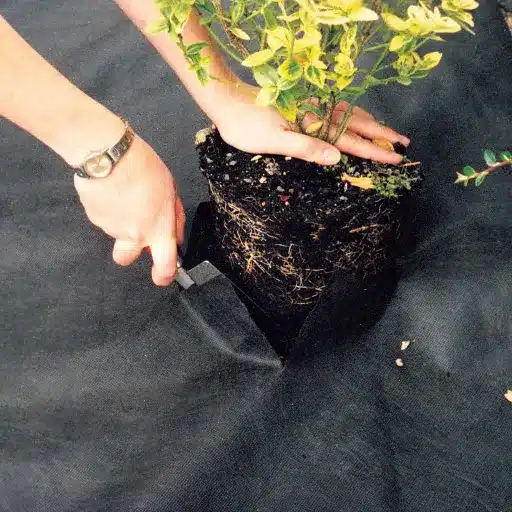
Weed control is among the most important facets of making a garden healthy and productive. Weeds compete directly with desirable plants for sunlight, water, and nutrients and, being aggressive, usually outcompete them. They reduce crop yields, hamper the growth of different ornamental plants, and generally make a garden unattractive to look at.
| Impact Factor | Percentage Loss | Source |
|---|---|---|
| Crop Yields (General) | Up to 34% | USDA Studies |
| Vegetable Crops | Up to 79% | Agricultural Research |
Studies cited by the United States Department of Agriculture (USDA) assert that without control, weeds can drop crop yields by up to 34, depending on the intensity of infestation and crop type. Moreover, research carried out by the University of California Integrated Pest Management program argue that appropriate weed management could bring about improved plant growth conditions, especially by reducing stress caused by competing organisms on resources.
Weeds also act as a breeding ground for various pests and diseases that might further reduce the resistance of your plants. For example, it has been investigated that invasive weed species increase the risk of bearing pathogens that can easily be transmitted to neighboring vegetation.
Impact on Plant Growth
Ensure that the weed species grow properly because they compete for the very resources that plants need for growth, namely water, sunlight, nutrients, and space. Studies have shown that infestations of weed can contribute to yield loss of up to 34% in cereal crops and up to 79% in some vegetable crops if these plants are not goofed upon. Rapid growth and adaptability often allow weeds to outgrow desired plants, thus inhibiting germination and biomass production.
⚠️ Allelopathic Effects
Invasive weeds may alter the soil composition by secreting allelopathic chemicals that obstruct seedling growth and nutrient foster in neighboring plants. For instance, some species, such as Johnsongrass (Sorghum halepense) and Canada thistle (Cirsium arvense), release compounds toxic for nearby vegetation, thereby slowing down growth even further. Weed control measures, including regular soil analysis and appropriate planting schedules, must be seen to minimize the harmful effect of weeds on your plants.
Choosing the Best Weed Barrier Fabric
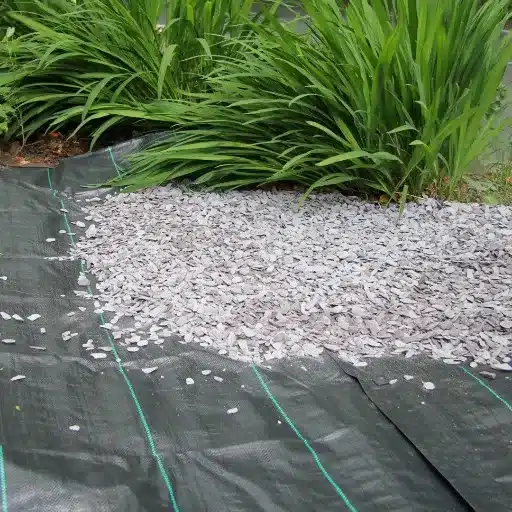
Good materials I look for in fabric are polypropylene and polyester, as these substances resist tearing and degradation. Then, I look for fabrics that allow for adequate water and air flow. This ensures the plants are healthy but weeds still get suppressed. Lastly, I choose a fabric in dimensions or weight that fits my garden or landscape for maximum efficiency.
Heavy Duty vs. Standard Options
💪 Heavy-Duty Weed Barrier
- Material: Woven polypropylene or low density dual-layer
- Durability: Strong resistance against tearing, UV degradation, and heavy foot traffic
- Best For: Commercial farms, heavy foot-use areas, robust weed suppression
- Features: Water and air permeable for plant health
🌱 Standard Weed Barrier
- Material: Spun-bonded polypropylene (thinner materials)
- Durability: Lighter weight, easier to install but less durable
- Best For: Short-term/seasonal applications, residential gardens
- Features: More economical option for moderate weed control
Deeper knowledge in heavy-duty versus standard weed barrier fabrics can assist greatly in making the perfect choice. Heavy-duty weed barrier fabric is for long-term application, hence more durable, with most heavy-duty fabric products manufactured from woven polypropylene or low density dual-layer… Materials constitute strong resistance against tearing, UV degradation, and heavy foot traffic, thus making them best in heavy foot-use areas where insect and weed suppression must be robust, such as commercial farms or very good landscaping. Also, heavy-duty options would allow water and air permeability for plant health.
Things to Be Considered When Choosing Weed Barrier Fabrics
1. Material
Common materials that make weed barriers are polypropylene, polyethylene, or natural fiber. Polypropylene, which is used mostly to weave barriers, is tougher and resistant to UV degradation. Market research data suggest that woven barriers made of UV-resistant polypropylene can last up to 5-8 years when exposed to indirect sunlight. Natural fiber barriers like jute or burlap are biodegradable and hence good for ecoland projects, but degrade fast-mostly within 6-12months-on the basis of moisture present.
2. Permeability
Water and air permeability is quite necessary for soil health. Several studies show that permeable barriers mainly made of non-woven fabric improve soil aeration and water penetration by 30%-40% when compared with plastic sheeting. It is critical for whichever crop with a sensitive root system susceptible to oxygen deficit.
3. Weight or Thickness
Weight, measured in grams per square meter (GSM), correlates directly with resistance to wear and tear. For example, weed barriers with a GSM of above 100 are excellent in suppressing weeds in areas that receive heavy foot traffic and can be used for pathways or farming rows. However, lighter weed barriers that are below 50 GSM will suffice for providing weed control for small garden beds, though they do not tolerate tearing well.
4. UV Resistance
These are fabrics made to prevent degradation from sun exposure, which is a very usual suspect in premature outdoor failure of these fabrics. Reports from agricultural test sites indicate UV-resistant fabrics maintain up to 85% of their tensile strength after three years of full sun exposure, while untreated ones would lose 50% of their strength in the same period.
Installation Tips for Weed Barrier Fabric
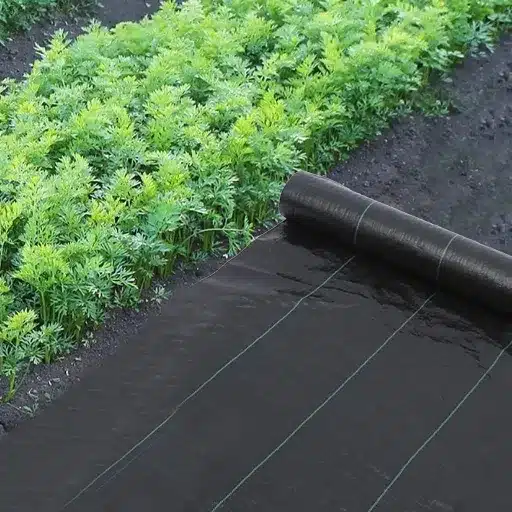
Depending on the specific applications of weed barrier fabrics, I always make sure to focus on factors pertinent to my project. For smaller garden beds, lower GSM fabric might suffice. For those combining durability and tear resistance, higher GSM selections are always made. Another factor is that I require UV-resistance when possible to maximize longevity, especially for applications made outdoors in the presence of significant sunlight. The considerations mentioned above help me go forth with better performance and usability for the more extended term in my weed barrier installations.
Preparing the Garden Bed
Proper garden bed preparation is an essential step that ensures effective weed barrier fabric installation and long-lasting results. Below is an outline followed by descriptions of each step:
🧹 Clear the Area
Begin by removing all existing vegetation, including weeds, grass, and roots. Where large plots are involved, a shovel or hoe can be used. According to agricultural professionals, keeping roots or debris entrenched can threaten openings or tears in the weed barrier in some time.
🏗️ Level the Soil
Rake the soil surface smooth, removing throws of rocks, clumps, and debris. An uneven surface can provide air pockets beneath the fabric, which lessen its usefulness. In a well-leveled bed, the fabric is in full contact, allowing for minimal weed growth. Data on soil compaction suggest that loose, aerated soil can reduce early erosion potential by 24%.
🌱 Amend the Soil
Check soil quality and amend with compost, peat moss, or fertilizer accordingly, improving its fertility and drainage. Such incorporation of nutrient-rich amendments before planting fabric truly provides a rich and healthier planting environment because there is any chance that soil modifications can be done later. Recent horticultural studies prove that soil amendment can increase plant yield by 15–20%, depending on time.
💧 Moisture Regulation
Lightly water the soil so that the moisture content will neither be too low nor too high. Appropriate moisture will make fabric implementation easy and ensure that plants will have their first moisture needs satisfied after installations.
Methods for Installing a Weed Barrier
An effective weed barrier requires proper installation: otherwise, all that you put in will destroy your investment. Following is a detailed step-by-step guide for the installation of weed barrier for best results, supported by data and expert recommendations.
Thoroughly Prepare the Area
Clear all vegetation, rocks, and debris from the designated area. Use a rake to smooth out the surface. With preparation of the ground, gaps that weeds can use get minimized; hence the weed barrier will work better. Research indicates that if one doesn’t prepare the surface well, roughly 40% more weeds can push through the fabric over a given time.
Select a Quality Weed Barrier Fabric
Select a professional-grade, permeable weed barrier fabric. Go for materials that allow water and air to pass but simultaneously hinder sunlight from reaching the soil, thereby restricting weed growth. Nonwoven polypropylene fabrics, for example, have been recommended for their durability and permeability. Manufacturers claim these fabrics block up to 97% of weed growth provided they are installed correctly.
Roll and Secure the Fabric
Roll out the fabric smoothly over the area, overlapping seams by at least 6 inches to eliminate gaps. Secure the edges and seams with landscape staples placed 12 to 18 inches apart. Research suggests that this kind of stapling reduces fabric displacement by 50%, even in heavy winds or foot traffic.
Cut Planting Holes Strategically
If planting through the barrier, use a sharp utility knife to cut X-shaped slits in the fabric. Ensure the openings are just large enough to accommodate the plants, as oversized cuts may allow weeds to grow through. Experts recommend cutting slits precisely to minimize areas exposed to sunlight, reducing the risk of weed intrusion.
Maintaining Your Weed Control Fabric
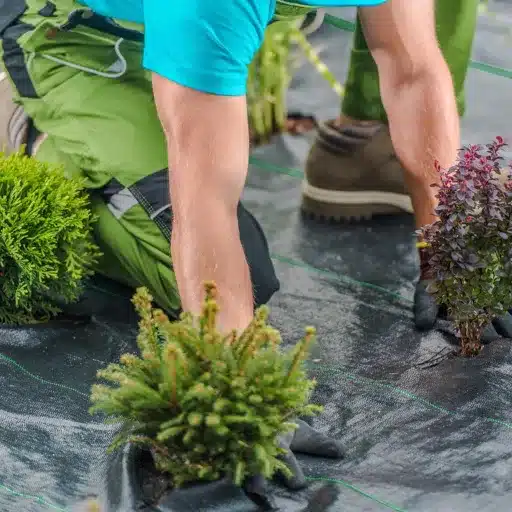
I prevent the edges from coming loose; I check periodically for cracks and possible points through which weeds might eventually make their way, and I clear them of any composite buildup that may impede proper functioning. Keeping the surface clean will help to keep it intact for as long as possible and therefore repel weeds from growing.
Regular Checks and Adjustments
Periodic inspection and adjustment are necessary to maintain adequate function and longevity of weed control fabric. In the course of time, various environmental factors such as erosion of soil, heavy rainfall, or simply shifting of the grounds might cause the fabric to get displaced or damaged. An ideal time for inspection is two times in a year so that weak points and tears are found early, and fabric exposure curtailed. Any damaged area ought to be patched up immediately to stop weeds from getting through with confident use of adhesive patches and replacement strips.
💡 Pro Tip: The research also shows that the durability of a weed barrier could be greatly increased by maintaining an even cover of either mulch or gravel over it. For instance, a landscaping guide published in 2023 says that 2 to 3 inches of mulch can increase fabric life by 30 percent. Accordingly, constant replenishment of the cover prevents the fabric beneath from becoming exposed to UV rays-a leading factor in fabric deterioration.
Cleaning and Caring for Landscape Fabric
Proper cleaning and maintenance are necessary to maximize landscape fabric’s longevity in controlling weed growth and preserving soil health. Over time, debris such as leaves, twigs, and dirt can accumulate on the surface of the fabric, possibly compromising its working. It is better to have a check at least once per season on this fabric for any buildup of debris. Studies further reveal that above-normal amounts of organic matter on the top surface provide nutrients favorable to weed germination, thus negating the barrier effects of the fabric itself.
For cleaning, get rid of debris on top with a soft rake or hand tools so as not to puncture the fabric. If the fabric is still exposed, check for tears and worn portions, and try to repair these. Most landscape fabric of quality-making is generally made from polypropylene or polyester, designed to last 5 to 20 years, depending on weight class and installation conditions. For example, heavy-duty commercial-grade applications (almost 3-5 ounces per square yard) are reported to be effective for up to two decades with upkeep.
| Fabric Type | Weight (oz/sq yard) | Expected Lifespan | Best Application |
|---|---|---|---|
| Light-Duty | 1-2 oz | 5-8 years | Small garden beds |
| Medium-Duty | 3-4 oz | 10-15 years | Standard landscaping |
| Heavy-Duty Commercial | 5+ oz | 15-20 years | Commercial/high-traffic areas |
Reference Sources
-
Bob Vila – “Prevent Weeds With This Simple Garden Add-On”
This article discusses the effectiveness of landscape fabrics as weed barriers, including hands-on tests of various products. It provides insights into durability and performance, making it a reliable source for understanding the feasibility of weed barriers.
Source Link -
Garden Mats – “Finally, a Weed Barrier That Works!”
This source highlights the benefits of high-quality woven polypropylene fabric as a weed barrier. It explains how the material’s design contributes to effective weed control, offering practical validation for its use.
Source Link -
Target – “Weed Barrier Landscape Fabric”
Target’s product listings for weed barrier fabrics provide details on various sizes, materials, and brands. This source is useful for understanding the range of options available and their applications in gardening and landscaping.
Source Link
Frequently Asked Questions (FAQs)
A weed barrier blocks sunlight from reaching the soil. Weed seeds need sunlight in order to germinate. If you simply place a weed barrier landscape fabric, it stands as a physical barrier, stopping the weeds from growing, while at the same time letting water and nutrients through into the soil. You must cover this fabric with a layer of mulch-the best option for the use of your garden-lacing it with elegance.
Several kinds of weed control fabric are available in the market-woven landscape fabric versus non-woven fabric, polypropylene landscape fabric. Woven landscape fabric, in the eyes of many buyers, is considered super strong, while non-woven landscape fabric is very good for water permeability. As to the polypropylene landscape fabric, this one is light and easy to install; unrestricted in its uses for anyone wanting to stop weeds in their gardens.
Yes, it would indeed help if you considered making use of your weed block or weed fabric under mulch for better results. The weed barrier fabric under the mulch is great for curtailing weed growth while still letting moisture reach your plants. On top of that mulch provides protection and good soil temperature control, so your plants in the garden will be happy.
The first step in installing a premium heavy-duty weed barrier fabric is to prepare the site by first removing any weeds and unwanted debris. Cut the fabric to size; make sure the dimensions will cover the entire area where you want to keep the weeds out. Put the fabric down on the ground, flat as you can, and keep it in place with the garden stakes or landscape pins. Now, top the fabric with mulch for increased efficiency and for holding it firmly in position.
The construction and functionality set woven and non-woven landscape fabrics apart. Woven landscape fabric consists of interlaced fibers and is therefore strong and durable, making it perfect for a long-term application in the garden. Non-woven fabrics made from bonded fibers allow better water flow, and hence they may not be very durable when applied for heavy-duty purposes. It all depends on what you need for your garden.
🌟 Key Takeaways
✅ Effective Weed Control
Up to 90% weed suppression when properly installed
💧 Moisture Retention
Up to 30% better soil moisture retention
🌿 Eco-Friendly
70% reduction in chemical treatments needed
⏱️ Long-Lasting
5-20 years lifespan depending on fabric quality
🚀 Ready to Transform Your Garden?
Choose the right weed barrier fabric for your needs and enjoy a low-maintenance, healthy garden that thrives season after season. Remember to consider material quality, permeability, weight, and UV resistance for the best long-term results.

